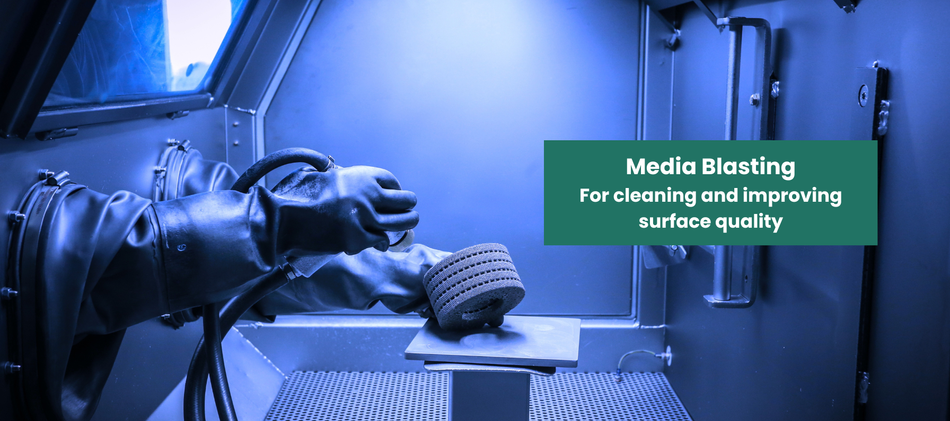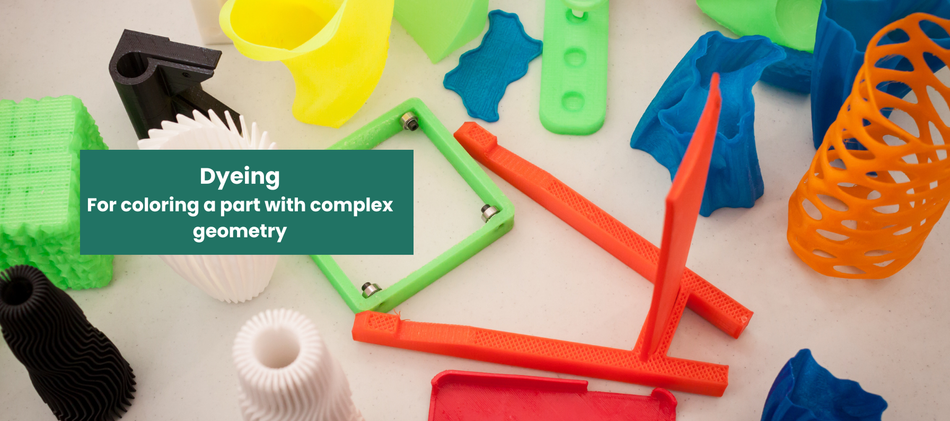The Guide to Selective Laser Sintering (SLS) Post Processing
Which post-processing option is right for your SLS part? This guide explains each option.

The blasting finishing process
Several post-processing options are available after printing a part via Selective Laser Sintering (SLS). Some of these options are standard and applied to every part. Others are optional but can significantly impact the look, feel, and functionality.
So which post-processing option is suitable for your SLS components? This guide explains the different options and when to consider each one.
Media Blasting

This standard process is included in any order from the MakerVerse platform. Parts printed via SLS typically contain loose powder and a grainy finish, but media blasting remedies this. An abrasive media (such as sand or glass beads) is applied to the part under high pressure.
Media blasting’s benefits are functional (gaining a specific surface roughness) and optical (a clean, polished surface). Once media blasting has finished, the production of the component might be complete – or the additional post-processing options detailed below might take place.
When to use this: Always. Media blasting is a standard process that improves surface quality and removes excess powder.
Media Tumbling
Media tumbling is a smoothing process that goes beyond what’s possible with media blasting. During the tumbling process, the parts are added to a tumbler and then deburred, finely ground, and polished by the movements of the container. The result is a satin-like finish that is unattainable through media blasting.
However, the part loses some material during this process. This could impact the look and mechanical properties of the part. For example, if the part has sharp edges or fragile features, media tumbling can adversely affect the final result.
When to use this: If a satin-like finish is needed and the part is not fragile.
Vapor Smoothing
This is another smoothing option. However, this one is performed chemically rather than mechanically. During vapor smoothing, the top layer of the part is dissolved in a vapor chamber. The result is a smooth and even surface that retains the part’s mechanical properties.
When to use this: When the surface needs to be smoothed and evened but is too fragile for media tumbling.
Color Dyeing

Parts printed through SLS are typically white, so adding additional colors is a popular in post processing. The SLS component is immersed in a water bath with a colored dye of choice in the dyeing process. The resulting chemical reaction causes the dye to penetrate the component, adding a homogenous color gradient to the part.
When to use this: When only a single color is needed or if the part has a complex geometry
Painting
In painting, a professional spray painting systems adds additional colors to the printed part. The part is cleaned and a clearcoat is applied to protect the paint. With painting, there’s a nearly infinite range of colors, but it can be difficult if the gemoetry of the part is complex.
When to use this: When multiple colors or a range of colors are needed. Ideal for evaluating a printed prototype.
Quality Measurements
Quality measurements don’t change the properties of a part, but this can be an invaluable process that ensures that the part is printed exactly as expected. There are several quality measurements available on the MakerVerse platform.
Optical 3D Scan: High-quality stereo cameras compare the original design geometry with the finished part. With the false-color image provided by the scan, it’s possible to spot geometric deviations from the original design. This option is ideal for a quick evaluation of dimensional stability.
Surface Roughness: A sensitive stylus measures the roughness of a part’s surface. Best performed when the statistical deviations of a surface from the ideal form are required.
When to use this: Whenever in-depth quality control is needed. It can be helpful before sourcing a larger batch of parts.
Next Steps
When creating parts using SLS technology, choosing the suitable post-processing options is a critical step. Selecting the right choice can affect the appearance and functionality of the component, so be sure to give proper attention to post processing.